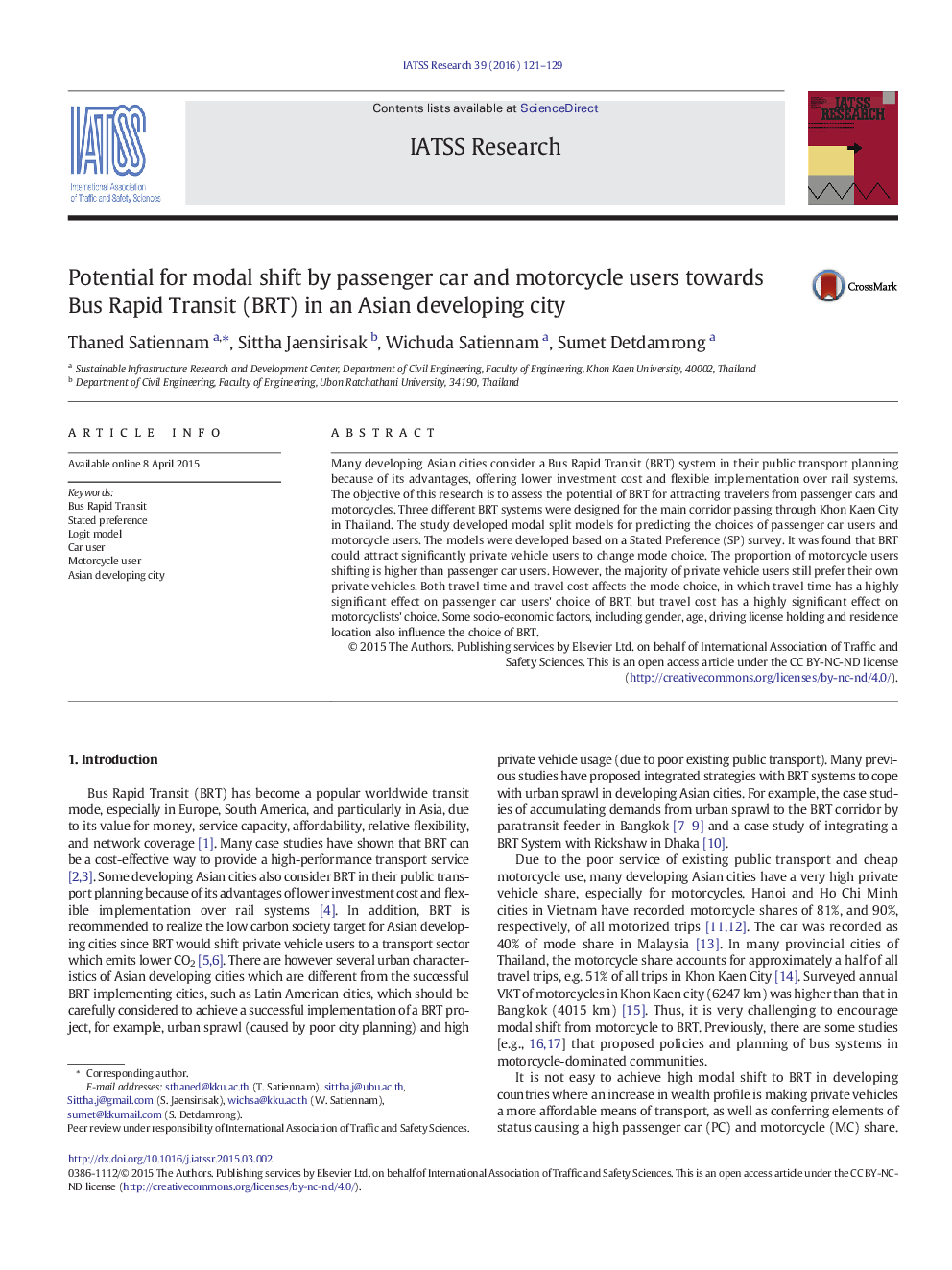| Article ID | Journal | Published Year | Pages | File Type |
|---|---|---|---|---|
| 1104604 | IATSS Research | 2016 | 9 Pages |
•BRT could attract some private vehicle users to change mode choice.•Proportion of motorcycle users shifting to BRT higher than passenger car users in the case study•Travel time has a highly significant effect on passenger car users’ choice of BRT.•The fare of BRT has a highly significant effect on mode choice, particularly motorcycle users.•Some socio-economic factors, including gender, age, driving license holding and residence location influence choice of BRT.
Many developing Asian cities consider a Bus Rapid Transit (BRT) system in their public transport planning because of its advantages, offering lower investment cost and flexible implementation over rail systems. The objective of this research is to assess the potential of BRT for attracting travelers from passenger cars and motorcycles. Three different BRT systems were designed for the main corridor passing through Khon Kaen City in Thailand. The study developed modal split models for predicting the choices of passenger car users and motorcycle users. The models were developed based on a Stated Preference (SP) survey. It was found that BRT could attract significantly private vehicle users to change mode choice. The proportion of motorcycle users shifting is higher than passenger car users. However, the majority of private vehicle users still prefer their own private vehicles. Both travel time and travel cost affects the mode choice, in which travel time has a highly significant effect on passenger car users' choice of BRT, but travel cost has a highly significant effect on motorcyclists' choice. Some socio-economic factors, including gender, age, driving license holding and residence location also influence the choice of BRT.
